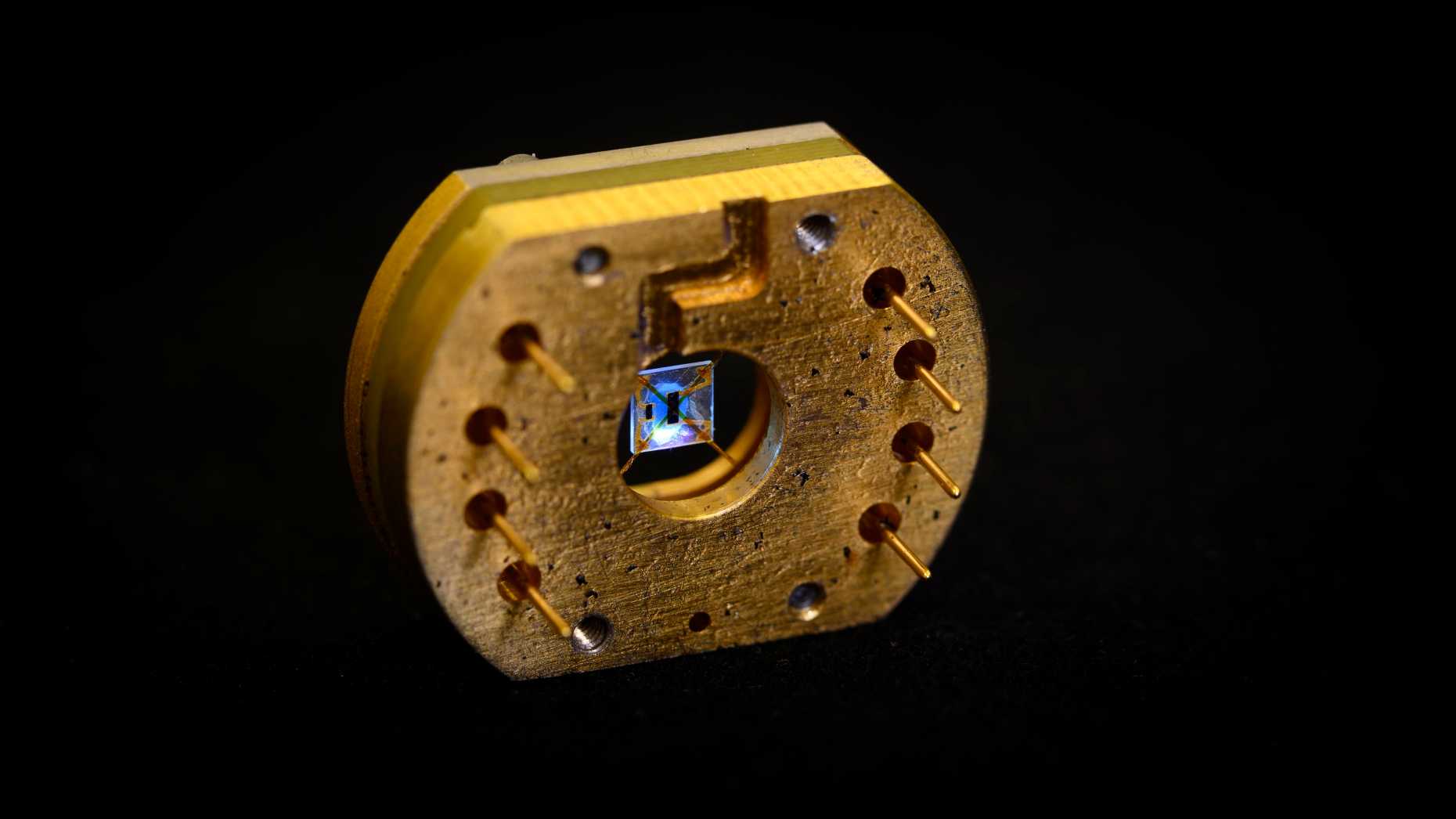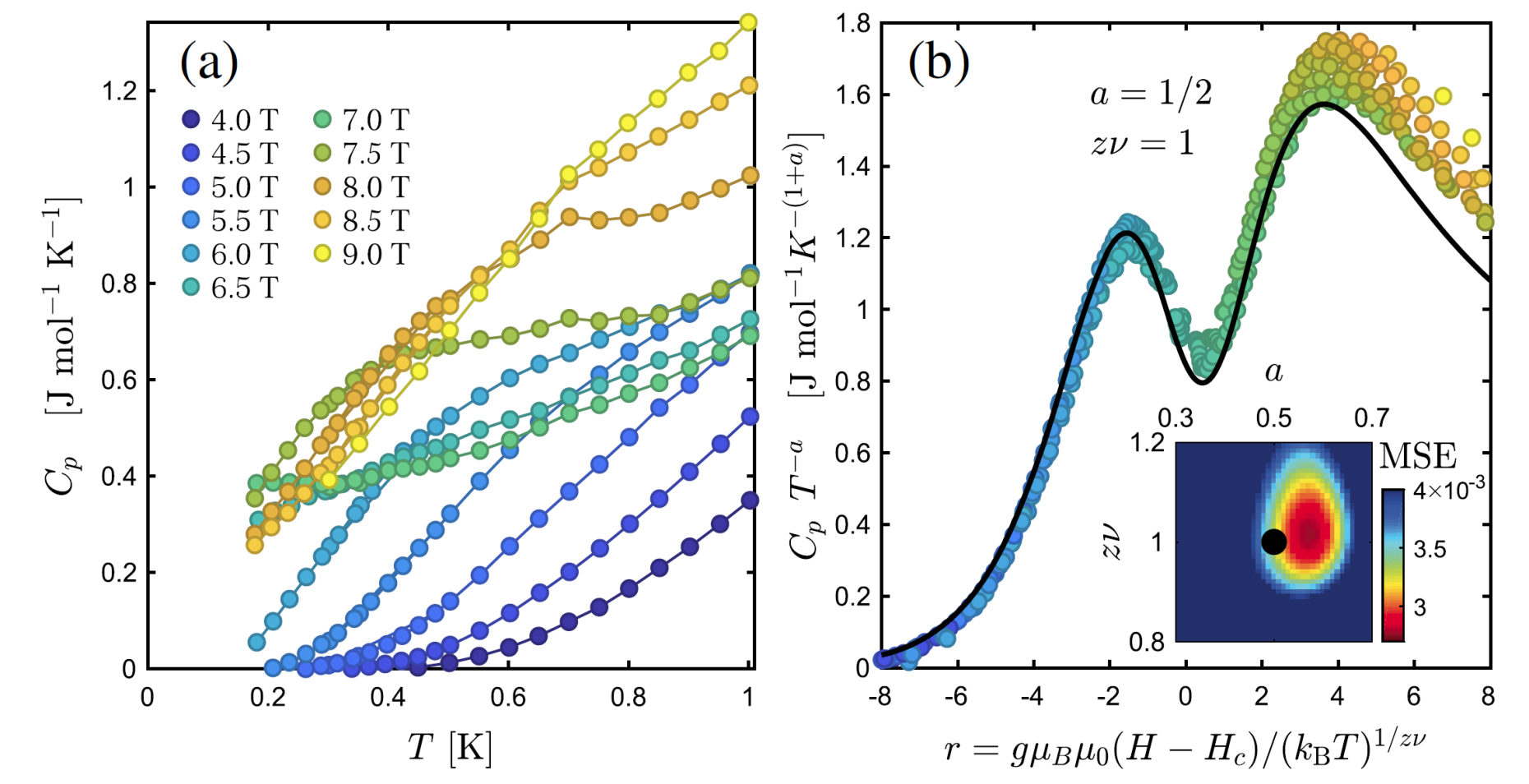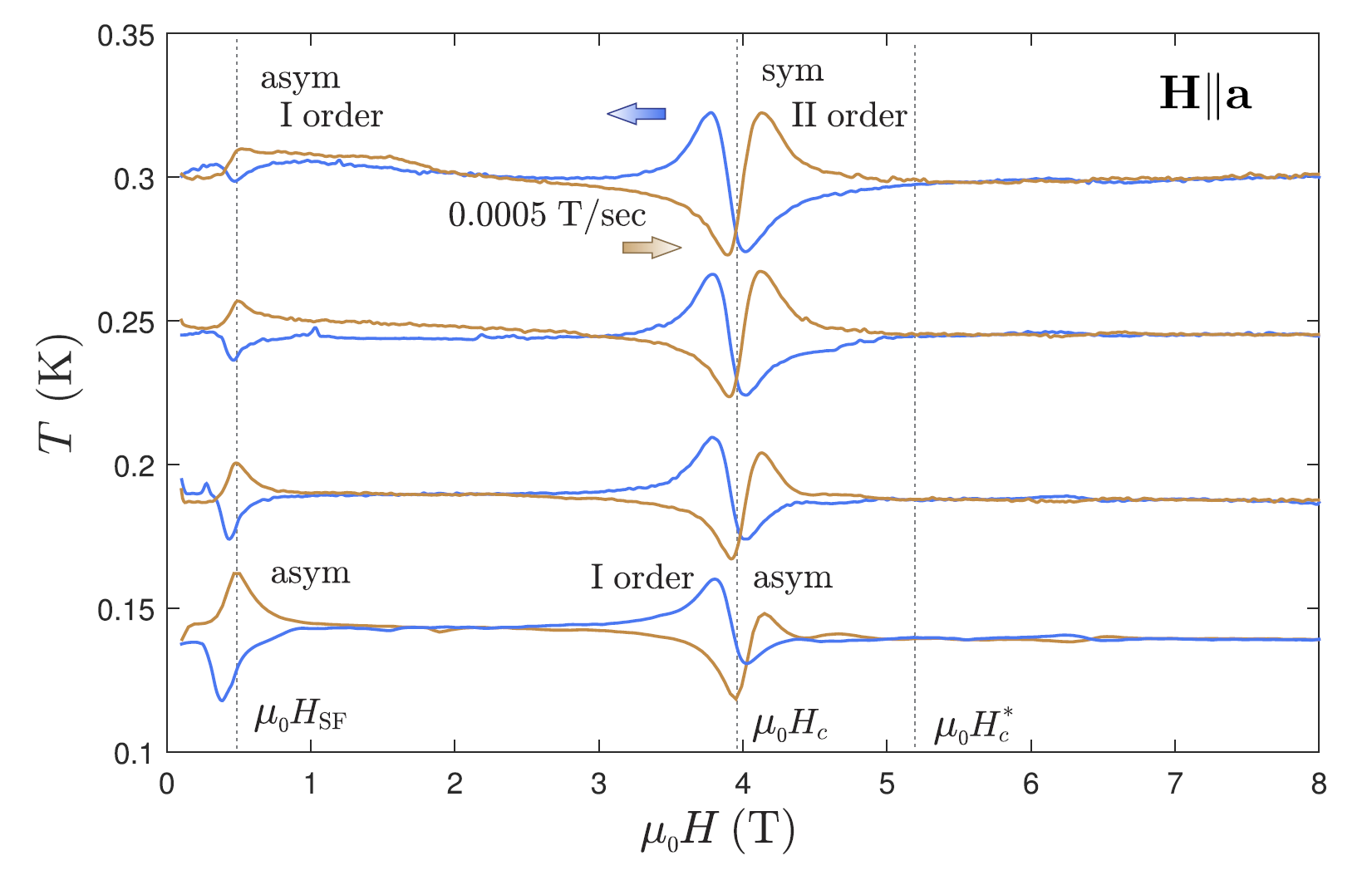Calorimetry

Specific heat is the most direct and very "clean" measure of fluctuations in any systems. In quantum magnets the relevant physics often occurs at very low temperature. This is both "good" and "bad". On the up side, at low temperatures the heat capacity of the crystal lattice is usually negligibly small, and one can often assume that the measured specific heat is entirely due to magnetic fluctuations (just what we need). On the down side is Nernst's theorem: even the magnetic has to eventually go to zero at T=0. This implies that we need to be able to measure extremely small heat capacities with very high precision. Fortunately, ralaxation calorimetry is a well established technique. We use the Quantum Design PPMS and a dilution refrigerator insert to measure specific heat of tiny samples down to 50 mK and in fields up to 14 Tesla.

One application of calorimetric measurements is detecting phase transitions, no matter their origin. Here this technique is applied to measuring magnetic phase diagram in frustrated ferro-antiferromagnetic spin chain material Rb2Cu2Mo3O12. It shows quantum phase transitions driven by either one- or three-dimensional fluctuations. For more details see external page S. Hayashida, D. Blosser, K. Yu. Povarov, Z. Yan, S. Gvasaliya, A. N. Ponomaryov, S. A. Zvyagin, and A. Zheludev Phys. Rev. B 100, 13442727 (2019).

Specific heat measurements can provide invaluable quantitative information of quantum critical behaviour. Here is the specific heat measured at various fields and temperatures near a field-induced d=1 z=2 quantum critical point in the spin ladder material BPCB (left). The same data plotted in scaling form almost perfectly collapse on top of each other (right). Moreover, the resulting curve almost perfectly matches the exact theoretical prediction for hard core Boson condensation in one dimension without any adjustable parameters (solid line)! For more details see external page D. Blosser, V. K. Bhartiya, D. J. Voneshen, and A. Zheludev, Phys. Rev. Lett. 121, 247201 (2018).
A technique closely related to calorimetry is measurement of the so-called magnetocaloric effect. One suspends the sample on an adiabatically isolated platform and measures its temperature change while sweeping the magnetic field. The resulting curves switch sign at continuous phase transitions. The technique is an insanely sensitive tool for detecting these. Here are some magnetocaloric data on the frustrated ferro-antiferromagnet BaCdVO(PO4)2. The data below are from external page K. Yu. Povarov, V. K. Bhartiya, Z. Yan, and A. Zheludev, Phys. Rev. B 99, 024413 (2019).

Can you see the tiny feature at 6.5 Tesla? Well, we missed it too, even though we published these data! We only noticed it later in followup measurements. It turns out that it marks a quantum phase transition from the paramagnetic to the so-called quantum spin nematic phase. The transition can be viewed as a Bose-Einstein condensation of two-magnon baound states. More details in external page V. K. Bhartiya, K. Yu. Povarov, D. Blosser, S. Bettler, Z. Yan, S. Gvasaliya, S. Raymond, E. Ressouche, K. Beauvois, J. Xu, F. Yokaichiya, and A. Zheludev, Phys. Rev. Research 1, 033078 (2019).